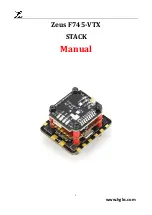
In case a load or a charger does not have a way of being remotely controlled, a device that can be controlled by the BMS must be
connected between the battery and the load or charger. These are the options:
• The BatteryProtect is mainly used for loads, but can also be used for charge sources, but be aware that the current flow is one-
directional. The BatteryProtect has a very low self-consumption while in protection mode.
• The Cyrix-Li relay is mainly used for charge sources but can also be used for loads. The current flow is bi-directional. But be
aware that the Cyrix has a higher self-consumption when in protection mode than the BatteryProtect has.
BatteryProtect
or Cyrix-Li
BMS
Load or
charger
The BMS controls the BatteryProtect or Cyrix-Li, which in turn disconnects the load or charger from the battery
3.5. Charging from an alternator
Lithium batteries have a very low internal resistance and will readily accept a high charge current. Because of this, special care
must be taken when lithium batteries are charged from an alternator. Most alternators are not able to limit the current going into a
lithium battery and can be damaged when they are used to charge a lithium battery. To safely connect an alternator, there are two
options:
• Either make sure that alternator rating is at least twice the battery rating. For example; a 400A alternator can be safely
connected to a 200Ah battery.
• Or use an alternator that is equipped with a current limiting feature. If the alternator does not have a current limiting feature, a
current limiting device needs to be added between the alternator and the starter battery. Possible current limiting devices that
can be used in this scenario are:
• The alternator port of a
.
• Add a
.
Lithium Battery Manual
Page 11
System design















































